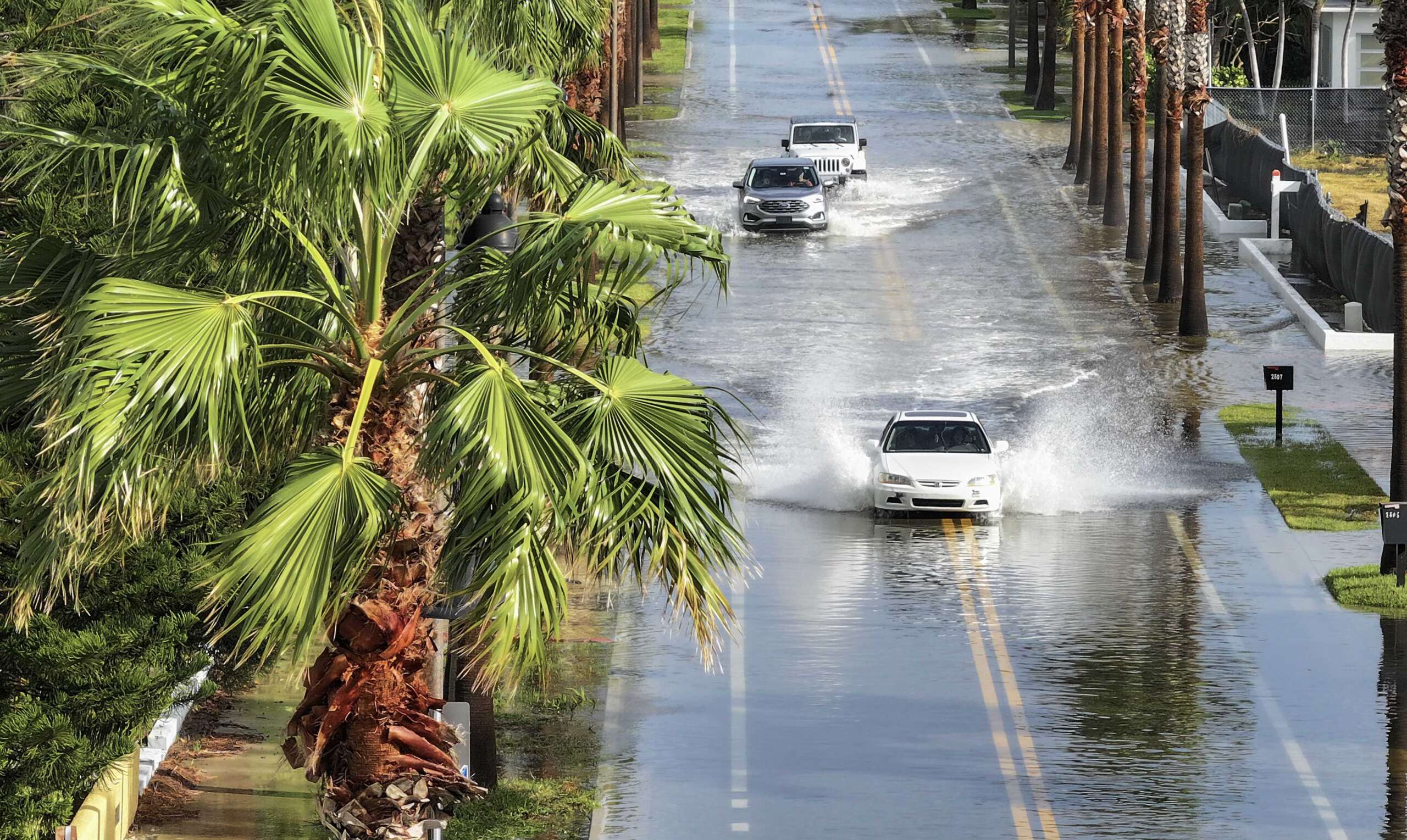Florida Real Estate vs Climate Reality: Why Flooding Risks Don't Impact Home Values
The paradox challenging South Florida's booming real estate market reveals a striking disconnect between climate science and property valuations. While environmental experts warn of escalating flood risks and McKinsey predicts Florida homes could lose 5 to 15 percent of their value by 2030 due to flooding risks, the market continues its upward trajectory, leaving investors and homeowners questioning conventional wisdom about climate-resilient investments.
This phenomenon represents more than just market dynamics—it's a complex interplay of psychology, economics, and climate denial that experts now call the "climate bubble." Understanding these forces becomes crucial as Hurricanes Ian, Helene, and Milton have intensified flooding risks from heat, precipitation, and storm surges, yet property values remain surprisingly resilient.
The Climate Denial Bubble: When Market Psychology Overrides Science
The concept of a climate denial bubble has gained significant traction among real estate economists and environmental scientists. Despite mounting evidence of increased flooding frequency, South Florida's property market demonstrates remarkable resistance to climate-related devaluation. Reports over the last five years have predicted corrections worth billions, yet the anticipated market adjustment has yet to materialize.
Current market data reveals this disconnect starkly. In April 2025, 10.3% of Florida homes sold above list price, with only 32.8% experiencing price drops, indicating sustained demand despite escalating climate risks. This resilience stems from several psychological and economic factors that create a feedback loop of continued investment in vulnerable areas.
The bubble's persistence reflects broader cognitive biases affecting real estate decisions. Homebuyers often prioritize immediate factors like location, schools, and amenities over abstract future risks like sea-level rise or increased hurricane intensity. This short-term thinking perpetuates market conditions that seemingly ignore climate science projections.
Additionally, the availability of federal flood insurance and disaster relief creates moral hazard, where property owners feel protected from the full financial consequences of climate risks. This safety net, while socially beneficial, may inadvertently sustain property values in areas that market forces alone might devalue.
Market Resilience Despite Mounting Climate Evidence
Florida's real estate market demonstrates unprecedented resilience in the face of accumulating climate data. Tidal flooding has already cost Miami-Dade County $500 million in lost real estate value, with sea levels rising one inch every three years, yet overall property values continue ascending across most regions.
The market's ability to absorb climate shocks without significant devaluation puzzles economists and climate scientists alike. Recent hurricane seasons, including the devastating impacts of Hurricanes Ian, Helene, and Milton, caused temporary market disruptions but failed to trigger the widespread value corrections many experts anticipated.
Several factors contribute to this resilience. Population growth continues driving demand, with Florida attracting approximately 1,000 new residents daily seeking favorable tax policies, warm weather, and economic opportunities. This demographic pressure maintains upward price momentum despite environmental challenges.
Infrastructure investments also play a crucial role. Local governments and private developers invest billions in flood mitigation, sea walls, and storm-resistant construction techniques. These adaptations create confidence among buyers that engineering solutions can address climate challenges, maintaining property desirability.
Furthermore, the luxury market segment shows particular resistance to climate concerns. Wealthy buyers often view potential climate risks as manageable through private flood mitigation, backup power systems, and comprehensive insurance coverage. This demographic's spending power significantly influences overall market trends.
Statistical Reality: The Numbers Behind Florida's Flood Risk
The statistical landscape of Florida's flood vulnerability presents sobering realities that contrast sharply with market optimism. One million Florida properties are projected to be underwater, currently funding nearly 30% of local revenues for more than half the state's municipalities. This data point alone suggests potential fiscal crises that could ultimately impact property values through reduced municipal services and infrastructure degradation.
Climate projections indicate accelerating risks. Sea level rise rates have increased from historical averages, with some coastal areas experiencing three inches of rise per decade. Storm surge models predict 50% higher flood heights by 2050, while precipitation intensity during hurricane events is expected to increase by 20-30% due to warmer ocean temperatures.
Insurance market trends provide another lens into actual risk assessment. Property insurance premiums in flood-prone areas have increased 40-60% over the past three years, with some insurers withdrawing from the Florida market entirely. These market-driven insurance adjustments reflect actuarial assessments of increasing climate risks.
Property damage statistics from recent hurricane seasons illustrate growing vulnerability. Hurricane Ian alone caused $112 billion in damages, while subsequent storms demonstrated that improved building codes cannot entirely mitigate risks from intensifying weather events. These experiences provide real-world validation of climate models predicting increased property vulnerability.
The National Flood Insurance Program faces mounting financial stress, with Florida properties representing a disproportionate share of claims. Program sustainability concerns could eventually affect property financing and valuations, particularly if federal support diminishes or premiums increase to actuarially sound levels.
Buyer Behavior Evolution: Subtle Shifts in a Stubborn Market
While overall market trends suggest continued climate risk denial, careful analysis reveals emerging shifts in buyer behavior that signal evolving awareness. After six years of fierce hurricanes and searing temperatures, Florida's residential real estate industry worries that climate patterns may affect the state's reputation as an idyllic place to live.
Demographic analysis shows generational differences in climate risk perception. Millennial and Gen Z buyers demonstrate increased awareness of environmental factors when making housing decisions, requesting flood zone maps, sea level rise projections, and hurricane history data more frequently than previous generations. This trend suggests potential future market impacts as these demographics gain purchasing power.
Geographic patterns also reveal subtle behavioral shifts. Properties in historically flood-prone inland areas experience slower appreciation rates compared to similar properties in less vulnerable locations. Coastal properties at higher elevations command premium prices, indicating some buyer recognition of elevation-based risk differences.
The luxury market shows emerging bifurcation, with ultra-high-net-worth buyers increasingly investing in climate-resilient features like elevated construction, backup power systems, and private sea walls. This trend suggests that affluent buyers acknowledge climate risks while believing private mitigation can address them.
First-time homebuyers demonstrate the most climate awareness, often incorporating flood risk into affordability calculations. However, inventory constraints and competitive market conditions frequently force these buyers to compromise on climate considerations in favor of homeownership opportunities.
Future Market Predictions: Experts Weigh In on Coming Changes
Real estate economists present divergent views on how climate risks will ultimately affect Florida property values. Most experts don't expect a sudden nosedive in home values from flood or climate change threats, suggesting gradual adjustments rather than dramatic corrections.
Market predictions for 2025 show expected growth between 0.6% and 2%, indicating continued, albeit modest, appreciation. However, these projections may not fully account for accelerating climate impacts or potential federal policy changes affecting flood insurance and disaster relief.
Long-term forecasting becomes increasingly challenging due to uncertainty about climate adaptation success. Technological solutions like improved flood barriers, better early warning systems, and climate-resilient construction methods could mitigate some risks. Conversely, accelerating sea level rise or intensifying hurricane seasons could overwhelm adaptation efforts.
Insurance market evolution will likely drive the most significant near-term changes. As actuarial data better reflects climate risks, insurance costs may reach levels that effectively price out middle-income buyers from high-risk areas. This insurance-driven pricing could accomplish what climate awareness alone has not: meaningful market corrections in the most vulnerable locations.
Federal policy changes represent another wild card. Potential modifications to National Flood Insurance Program structure, disaster relief funding, or mortgage lending practices in high-risk areas could rapidly alter market dynamics. Political pressure to reduce taxpayer exposure to climate risks may ultimately force market-based solutions.
Strategic Insights: Navigating Florida's Climate-Challenged Real Estate Market
How should investors approach Florida real estate given climate risks?
Sophisticated investors increasingly employ climate risk assessment tools alongside traditional market analysis. Due diligence now includes elevation mapping, flood zone verification, insurance cost projections, and infrastructure resilience evaluation. Diversification across risk levels and geographic areas provides portfolio protection against localized climate impacts.
What factors maintain property values despite obvious climate risks?
Multiple psychological and economic forces sustain property values including cognitive bias toward short-term thinking, federal disaster assistance moral hazard, continued population growth, infrastructure investment confidence, and luxury buyer resilience. These factors create powerful momentum that climate data alone cannot overcome.
Which areas show the greatest vulnerability to future value corrections?
Properties in FEMA flood zones, low-elevation coastal areas, and locations with poor drainage infrastructure face the highest correction risks. Areas dependent on aging sea walls or pump systems also show vulnerability. Conversely, elevated inland properties with good drainage and new construction standards demonstrate greater resilience.
How accurate are expert predictions about climate-driven market corrections
Historical accuracy of climate-related real estate predictions remains poor, with most corrections failing to materialize as forecasted. However, prediction models continue improving as climate impacts accelerate and insurance markets better price risks. The timing remains uncertain, but directional trends toward climate consideration appear inevitable.
What role does insurance play in future market dynamics?
Insurance markets increasingly drive actual climate risk pricing through premium adjustments and coverage availability. As federal flood insurance faces financial pressure and private insurers withdraw from high-risk areas, insurance costs may become the primary mechanism forcing market recognition of climate risks.
Should first-time buyers avoid flood-prone areas entirely?
First-time buyers benefit from climate risk awareness but shouldn't automatically avoid all flood-prone areas. Risk levels vary significantly within flood zones, and mitigation measures can substantially reduce actual vulnerability. Proper due diligence, appropriate insurance coverage, and realistic cost projections enable informed decisions rather than blanket avoidance.












